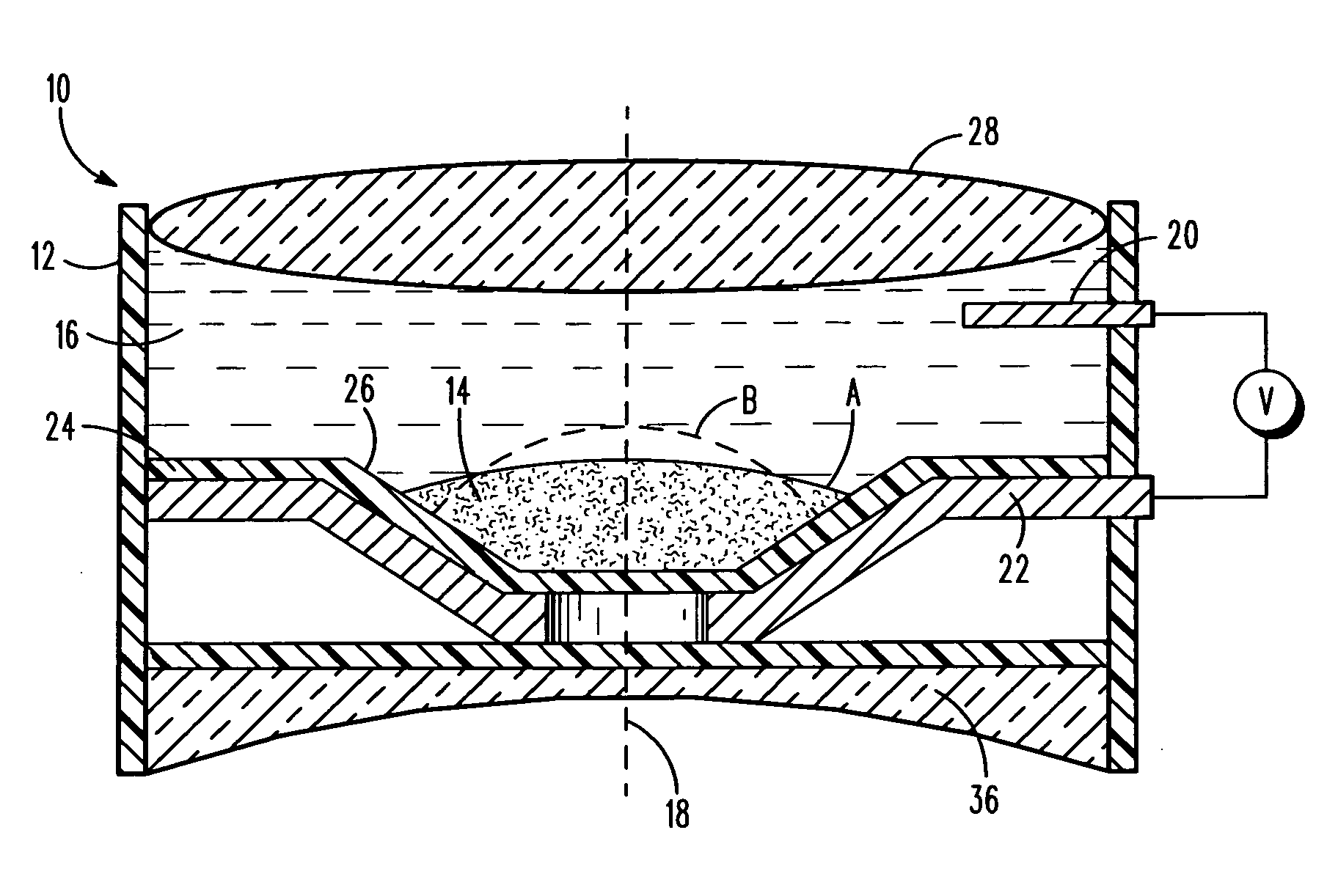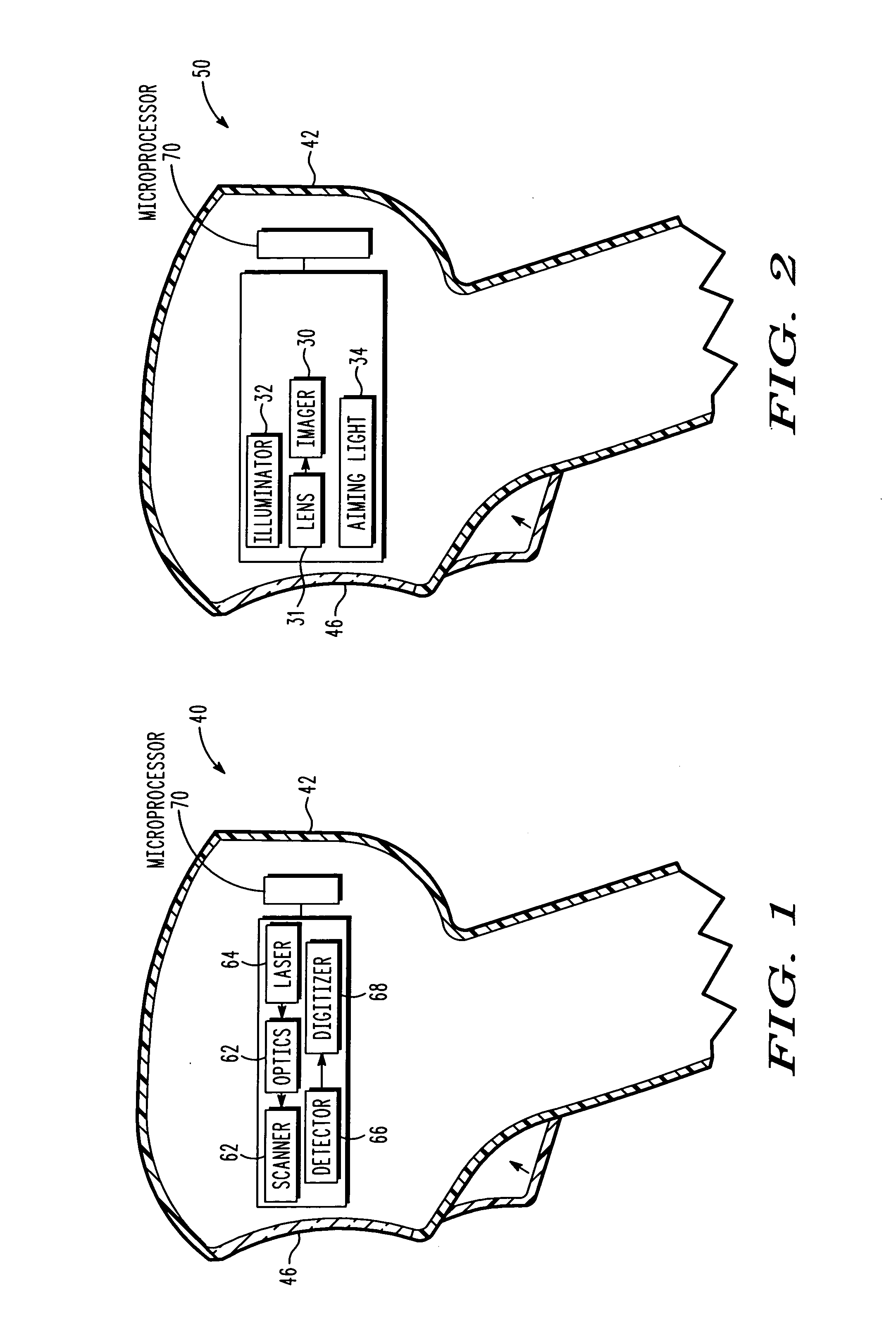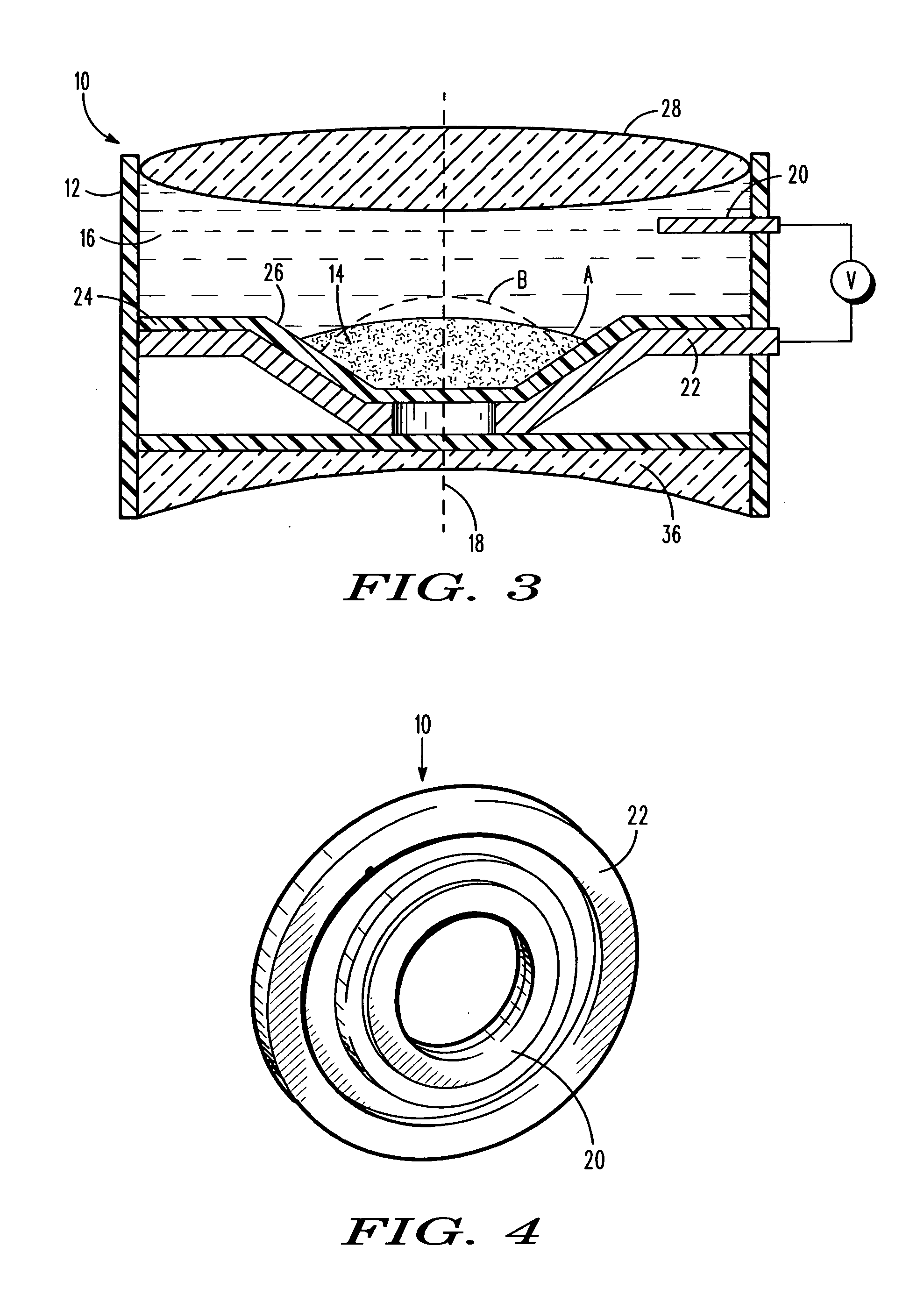Electro-optical lens mounting assembly and method in electro-optical readers
a technology of electro-optical readers and mounting assemblies, which is applied in the direction of instruments, mirrors, sensing record carriers, etc., can solve the problems of consuming electrical power, affecting the performance of the reader, so as to reduce the noise, vibration, wear and dust, and the effect of reducing the size, weight, power and volume requirements
- Summary
- Abstract
- Description
- Claims
- Application Information
AI Technical Summary
Benefits of technology
Problems solved by technology
Method used
Image
Examples
Embodiment Construction
[0022]FIG. 1 depicts a moving laser beam reader 40 for electro-optically reading indicia, such as a symbol, that may use, and benefit from, the present invention. The beam reader 40 includes a scanner 62 in a housing 42 for scanning an outgoing laser beam from a laser 64 and / or a field of view of a light detector or photodiode 66 in a scan pattern, typically comprised of one or more scan lines, through a window 46 across the symbol for reflection or scattering therefrom as return light detected by the photodiode 66 during reading. The beam reader 40 also includes a focusing lens assembly or optics 61 for optically modifying the outgoing laser beam to have a large depth of field, and a digitizer 68 for converting an electrical analog signal generated by the detector 66 from the return light into a digital signal for subsequent decoding by a microprocessor or controller 70 into data indicative of the symbol being read.
[0023]FIG. 2 depicts a imaging reader 50 for imaging targets, such ...
PUM
 Login to View More
Login to View More Abstract
Description
Claims
Application Information
 Login to View More
Login to View More - R&D
- Intellectual Property
- Life Sciences
- Materials
- Tech Scout
- Unparalleled Data Quality
- Higher Quality Content
- 60% Fewer Hallucinations
Browse by: Latest US Patents, China's latest patents, Technical Efficacy Thesaurus, Application Domain, Technology Topic, Popular Technical Reports.
© 2025 PatSnap. All rights reserved.Legal|Privacy policy|Modern Slavery Act Transparency Statement|Sitemap|About US| Contact US: help@patsnap.com



